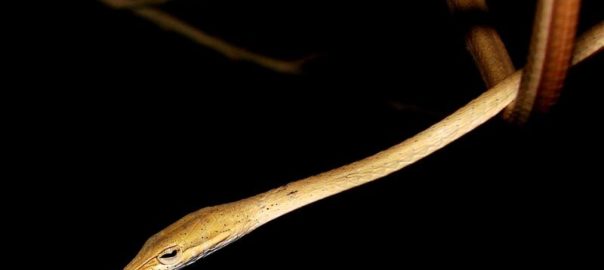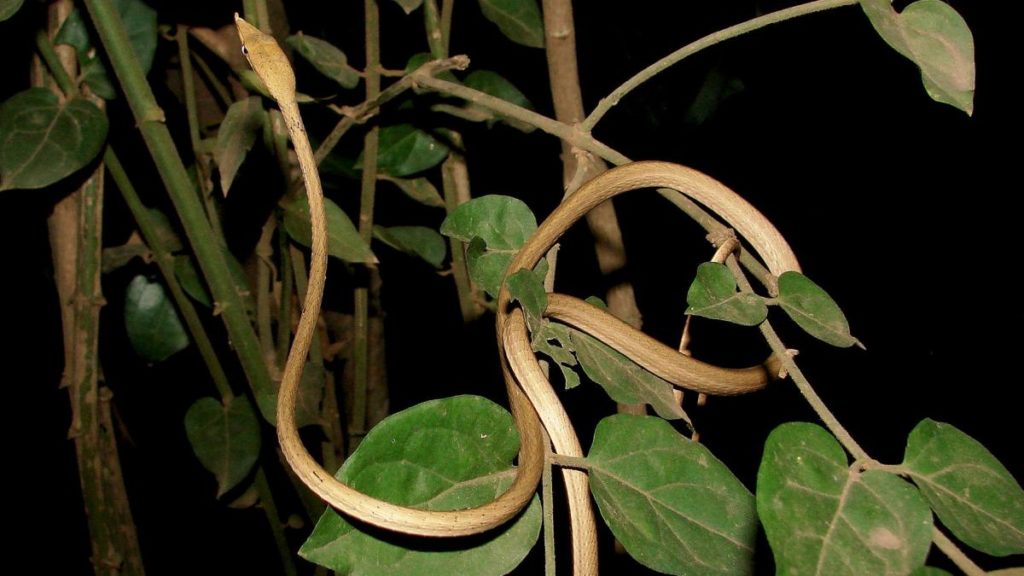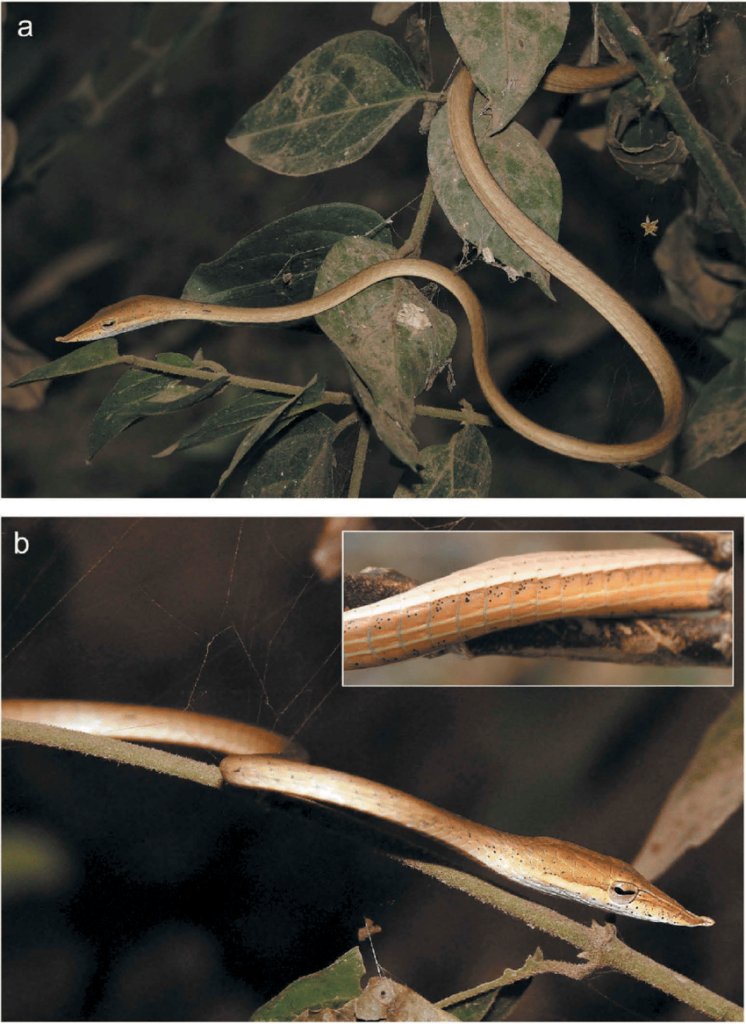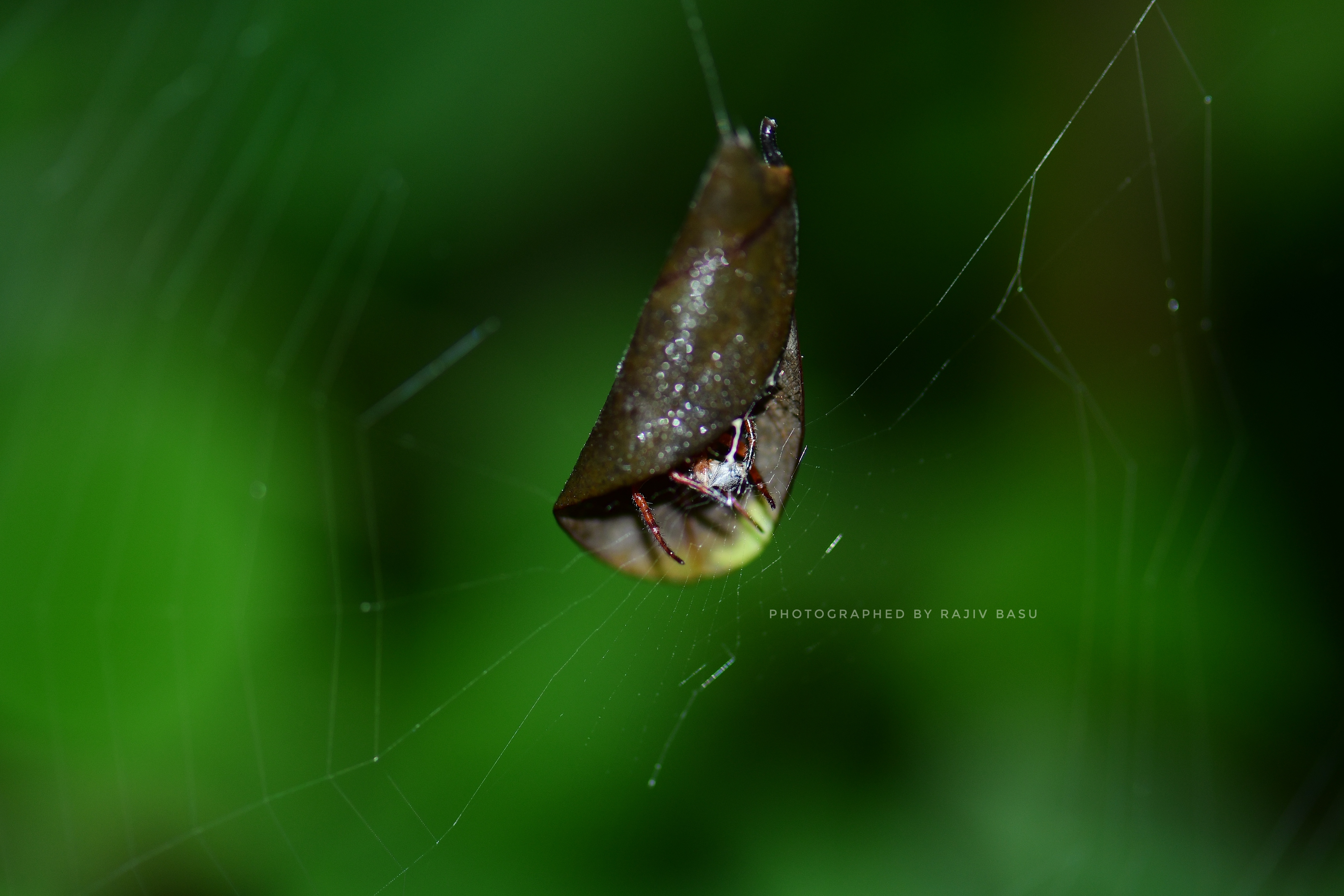Ten years ago, two scientists working at the Simlipal Biosphere Reserve in Odisha saw a snake crossing their path. They recognised it as a vine snake but one that they had not seen before in these parts. Later that year, they again saw a male on a Lantana bush confirming that the snake was indeed a resident reptile but not scientifically identified. Finally, after a decade of deliberation, cross-referencing and research efforts of a global team of scientists, in 2019 the snake has been recognized as a new species and named Ahaetulla laudankia. This discovery of a vine snake species comes after a gap of 113 years, since Ahaetulla anomala or the variable colored vine snake was described in 1906!
Also Read: India Gets a New Species of Pit Viper Snake
Dr. Pratyush Mohapatra, one of the scientists who spotted the vine snake in 2009 along with Prof. Sushil K Dutta says, “We thought it was another subspecies of the Common vine snake at the time.”
Notably so, because vine snakes resemble each other quite a lot and may easily be mistaken for another known species. In India, seven vine snake species are found of the genera Ahaetull. The taxonomy of Ahaetulla vine snake is not fully understood and there is no consensus on species characterization.
In the case of the new species, the researchers believed it to be a subspecies of common vine snake found in India. After studying another brown vine snake specimen (Ahaetulla pulverulenta) from Baripada also in Odisha the team doubted that the snake could indeed be a new species when the colours and patterns did not match. It was time for a modern approach using molecular analysis which proved that the initial specimen was indeed a unique species. It was genetically distinct from green vine snakes.
Over the next ten years, after reviewing all the literature pertaining to the brown coloured vine snakes from India and after cross-validating with two old collections of brown vine snakes from Rajasthan, the team was convinced it had discovered a new species. They have published a report on their work in the Journal of Natural History.
Also Read: Blind, Albino Crab Discovered in Meghalaya
Laudankia vine snake
There is an interesting reason for the name given to the new vine snake. Like all snakes of this nature, it has a slender body, narrow head and a pointed snout. The snakes are poisonous with rear fangs and survive eating lizards, frogs or birds using their vine-like appearance to their advantage hanging around creepers and vines.
In Odisha, where the new species has been discovered the vine snakes are locally called Laudanka (Lau meaning bottle gourd, danka meaning dried twig) because of their close resemblance to the plant. The scientists therefore thought it befitting to name the new brown vine snake Ahaetulla laudankia or Laudankia vine snake.
The snake is brown with black speckles, with subtle white under its head and has a bright orange-brick red belly with whitish lines running down the length of its abdomen. While the keyhole-shaped iris is black coloured, the outer sclera is usually bicoloured and matches the colour of the snake’s head, as per ResearchMatters.
“The population of A. laudankia is most probably quite low, and it might just be naturally rare”, says Dr Mohapatra. “Now, apart from Odisha, Maharashtra and Rajasthan, we’ve gathered more information about its distribution in Madhya Pradesh and North Bengal. We are now trying to find the snake’s distribution range. The immediate target is to find the original distribution range.” He adds.
The researchers feel it could have been misidentified earlier as well given the similarity with other species. However, now that the scientists can rely on molecular analysis as well beside conventional methods of taxonomic identification, it might be useful to collect specimens of similar snakes reported from other areas of India and confirm the identification.
The research team included scientists from different institutions – V. Deepak (Centre for Ecological Sciences, Indian Institute of Science, Bengaluru); Surya Narayanan (Wayanad Wild), Vivek Sarkar (Wildlife Institute of India, Dehradun) and Sushil K. Dutta (Nature, Environment &; Wildlife Society, Angul).
Also Read: Are there any poisonous frogs in India?







Two snake posts, back to back! I didn’t read the last post because the viper really creeped me out, but this one looks sort of cute and so read it. Are you rolling your eyes at such a naive and uninformed reader?
Haha! What I’m surprised about the most is how we still have big, visible reptiles such as these snakes that are still waiting to be discovered while we thought we humans knew everything there is to know about the world. I think there are many of us, including scientists who are still uninformed and still clueless about what all mother nature has in store in her bag full of surprises.
I think there are many of us, including scientists who are still uninformed and still clueless about what all mother nature has in store in her bag full of surprises.